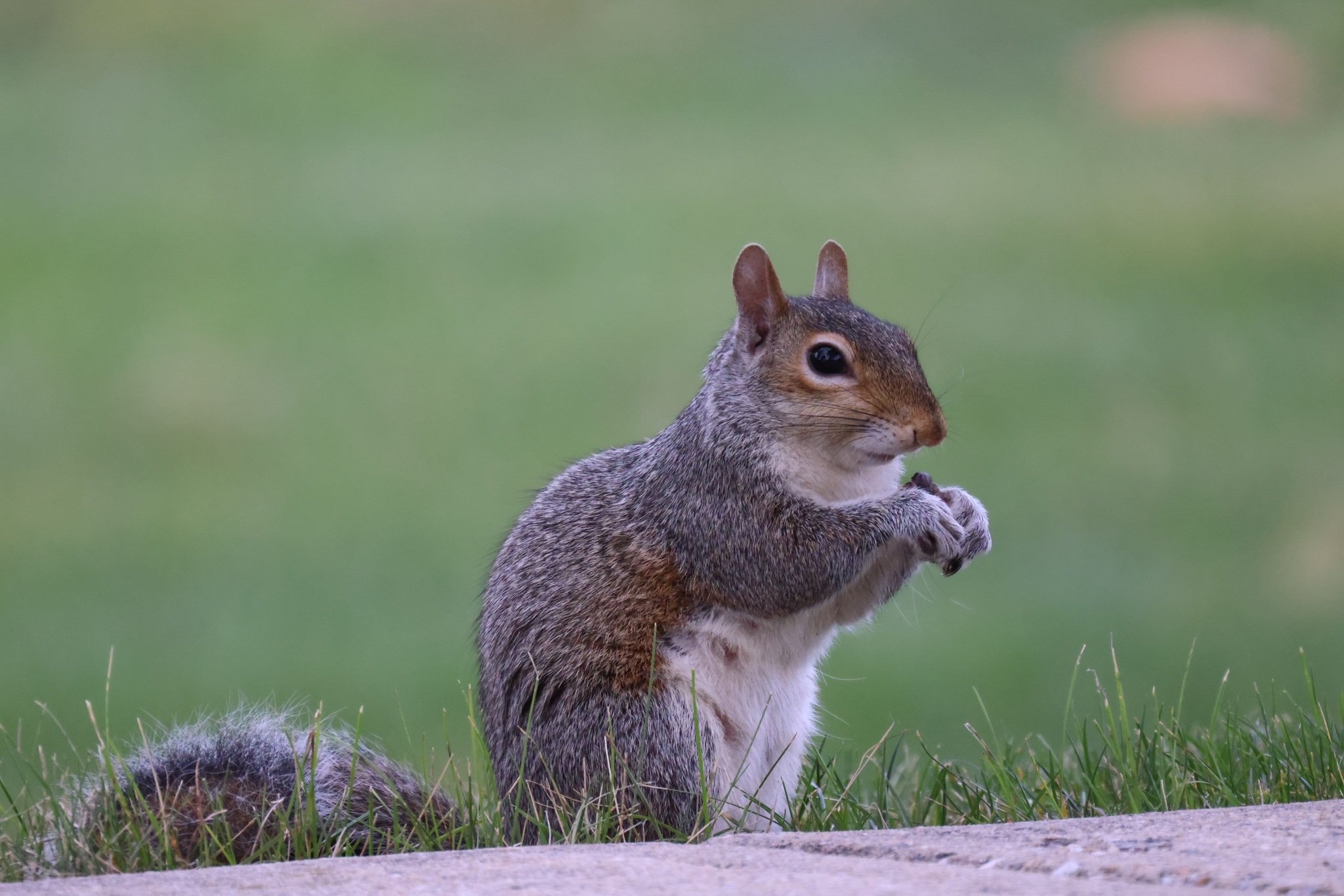Living With Tree Squirrels
This page provides problem-solving advice and ways to make your yard or home less attractive to tree squirrels in the first place.

A Squirrel in Your House
If a squirrel is in your house and you know its location, open a nearby window or exterior door, and close interior doors to limit access inside the house. Left alone, it will find the opening and leave.
Although a squirrel can jump from a second-story window onto a grassy area without harm, a first-floor exit is preferable. Never force a squirrel to jump from the second story. If it cannot leave on its own, set a live trap. Create a foot-long trail of bait leading into the trap, and leave it alone for a few hours. Once the squirrel is trapped, release it outside onto your property. Releasing it on your own property is your only legal option unless you have a permit from the Illinois Department of Natural Resources.
A Nest in Your House
Prevention
The best way to prevent a squirrel from establishing a nest inside your home is to keep it away from attractive areas from the start.
- Repair broken, weak or rotted areas on your roof, soffit and fascia.
- Install and maintain chimney caps.
- Place welded wire inside attic vents in case the covers are removed.
- Trim tree limbs that offer access to your roof.
- Grease downspouts with petroleum jelly and crushed red pepper for five to seven days.
Eviction Techniques
If a squirrel has already established a nest in your house, try the techniques below, preferably two or three at the same time. After a few days, pack crumpled newspaper into the entrance. If the squirrel is still there, it will pull the paper out. If the paper stays in place for a few days, repair any openings.
- Place flashlights, flood lamps, blinking holiday lights or a constantly noisy device such as a radio, alarm clock or toy in the den. Leave them on day and night — or at least at night to disturb the animal’s sleep.
- Place ammonia-soaked rags in the nest for one week. Resoak the rags daily, and pack crumpled newspaper in the entrance to hold in the fumes. Never use ammonia in spring or later summer; it can harm infants too young to escape.
- If the den is in a chimney, usually on the smoke shelf in the flue, lower a light into the chimney, and place a bowl of ammonia and a radio on the fireplace grate. Do not “smoke out” the animals. They can pass out, and you’ll have to physically remove them yourself.
How to Make Your Home Less Attractive
- Never feed squirrels.
- Keep pet food and water dishes inside.
- Keep grills and barbecues clean.
- Keep the ground below bird feeders and fruit trees clean. Grease feeder poles with petroleum jelly and crushed red pepper.
- Spray plants with a mixture of 1 gallon of water and 2 tablespoons of hot sauce or garlic puree. Reapply after a heavy dew or rain.
- To protect new bulbs, pick up any loose skins, and spread a thick layer of mulch over the ground. Lay chicken wire on top, and place a light layer of mulch or leaves over the wire. Remove the wire in the spring.
- Plant distasteful daffodil, squill, grape hyacinth and crown imperial bulbs among tulips and other tastier varieties. (Crown imperial bulbs have a horrible smell, too.)
- To deter gnawing, mix petroleum jelly and crushed red pepper, and spread the mixture on affected areas. Ammonia-soaked rags can also be effective.
What You Should Never Do
- Trapping and removing an animal is not always the solution to the problem. Removing the animal is illegal without the proper permits and only creates an open space for another animal to inhabit. A trapped adult may also leave young behind to die of starvation. Focus on removing the attraction, not the animal.
- Never move young from a den.
- Never use poisons. They’re inhumane and may be illegal. They can also result in secondary poisoning of other wild animals or pets.
- It’s illegal to keep wild animals, even for a short time. They have special nutritional, housing and handling needs, and inexperienced individuals who try to raise or treat them inevitably produce unhealthy, tame animals that can’t survive in the wild.